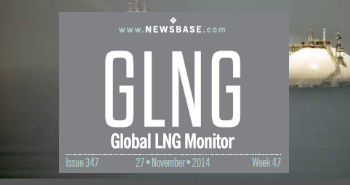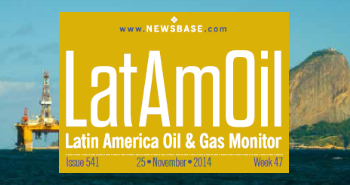BP sends first carbon-offset LNG cargo to ECA terminal in Mexico

BP (UK) has made its first carbon-offset delivery of LNG to the Energía Costa Azul (ECA) terminal in Mexico under a contract with two subsidiaries of US-based Sempra Energy – namely, the company’s Mexican arm IEnova and its LNG arm Sempra LNG.
In a joint statement, BP and Sempra noted that the LNG was due to arrive at ECA’s terminal on July 16. They did not reveal the size or value of the cargo but reported that the gas had been sourced from BP’s global portfolio. (Additionally, they specified that BP was delivering the LNG to IEnova’s existing regasification terminal, not to the gas liquefaction plant now under construction at an adjacent site.)
BP said it had used its own greenhouse gas (GHG) quantification methodology to calculate the volume of carbon dioxide and methane generated by the LNG shipment, all the way from the wellhead to discharge at the ECA terminal. “These estimated emissions will be offset by retiring a corresponding amount of carbon credits, sourced from a Mexican afforestation project from BP’s vetted portfolio of offsets on behalf of Sempra LNG,” it explained.
The carbon-offset shipment is in line with BP’s efforts to meet certain targets for reductions in GHG emissions by 2030 and to bring net emissions down to zero by 2050, the statement said. It also stressed that BP did not intend to rely on carbon credits to reach its 2030 goals.
Sharon Weintraub, BP’s senior vice-president for gas and power trading international, indicated that the company was ready to make carbon-offset LNG deliveries to other destinations. “Delivering carbon-offset LNG is an important part of meeting growing global energy demand,” she said. “For BP, this is part of continuing to meet growing customer demands for new energy solutions that will amplify value for our business. For customers, this means access to exciting initiatives that can help them in pursuing their sustainability strategies by quantifying the carbon intensity associated with the LNG supply from BP’s diverse portfolio of LNG sources and then offsetting those emissions.”
Meanwhile, Carol Howle, BP’s executive vice-president for trading and shipping, said that the LNG delivery to ECA had highlighted the ways in which the company can use natural gas to help lower GHG emsisions. “Natural gas has a key role to play in getting the world to net zero. This new offer further demonstrates our determination to remain one of the world’s leading and most innovative LNG suppliers,” she said. “The development and continuous improvement of a clear and reliable methodology for quantifying the carbon intensity of our LNG supply chain is an important step in helping our customers deliver their sustainability goals and supports our ambition to help the world get to net zero.”
According to the joint statement, the carbon-offset shipment is also in line with Sempra’s decarbonisation plans. The US-based company has said it aims to reduce the GHG emissions intensity of its existing LNG infrastructure by 20% on 2020 levels over the next few years and will set more goals by 2025, as it expands its LNG business.
Justin Bird, the CEO of Sempra LNG, stressed this point, saying: “We are excited to advance our goal to lower GHG emission intensity at our LNG facilities. Sempra LNG continues to build a strong business portfolio focused on sustainability and the global energy transition.”
For her part, IEnova CEO Tania Ortiz expressed satisfaction with the LNG delivery, saying it would benefit the company. “We are pleased to work with Sempra LNG to help deliver the much-needed natural gas to customers in Mexico in a sustainable manner,” she commented. “We are always looking for new ways we can create value not only through the safe and responsible operation of our facilities, but also by contributing toward the energy transition.”



Follow us online